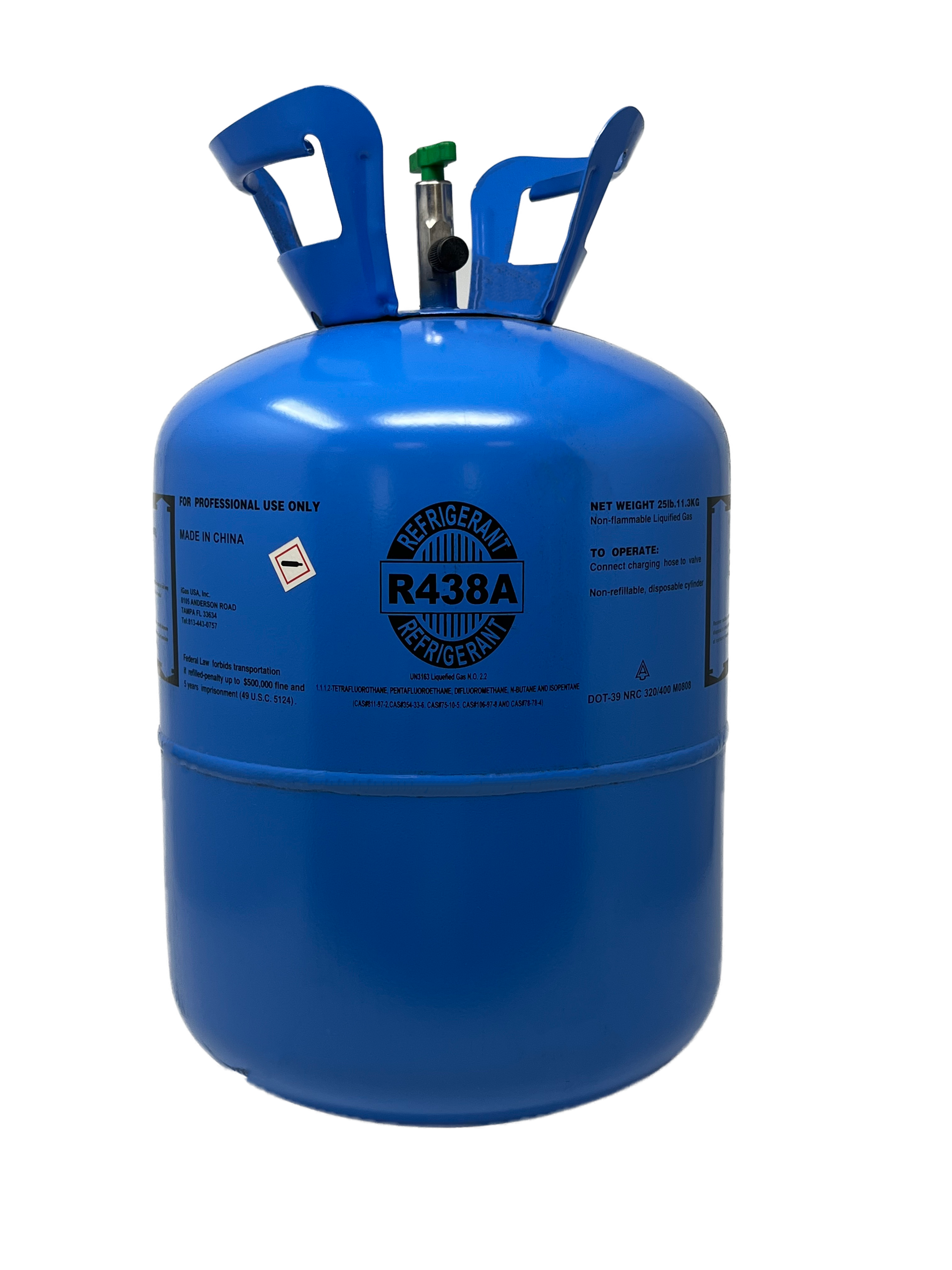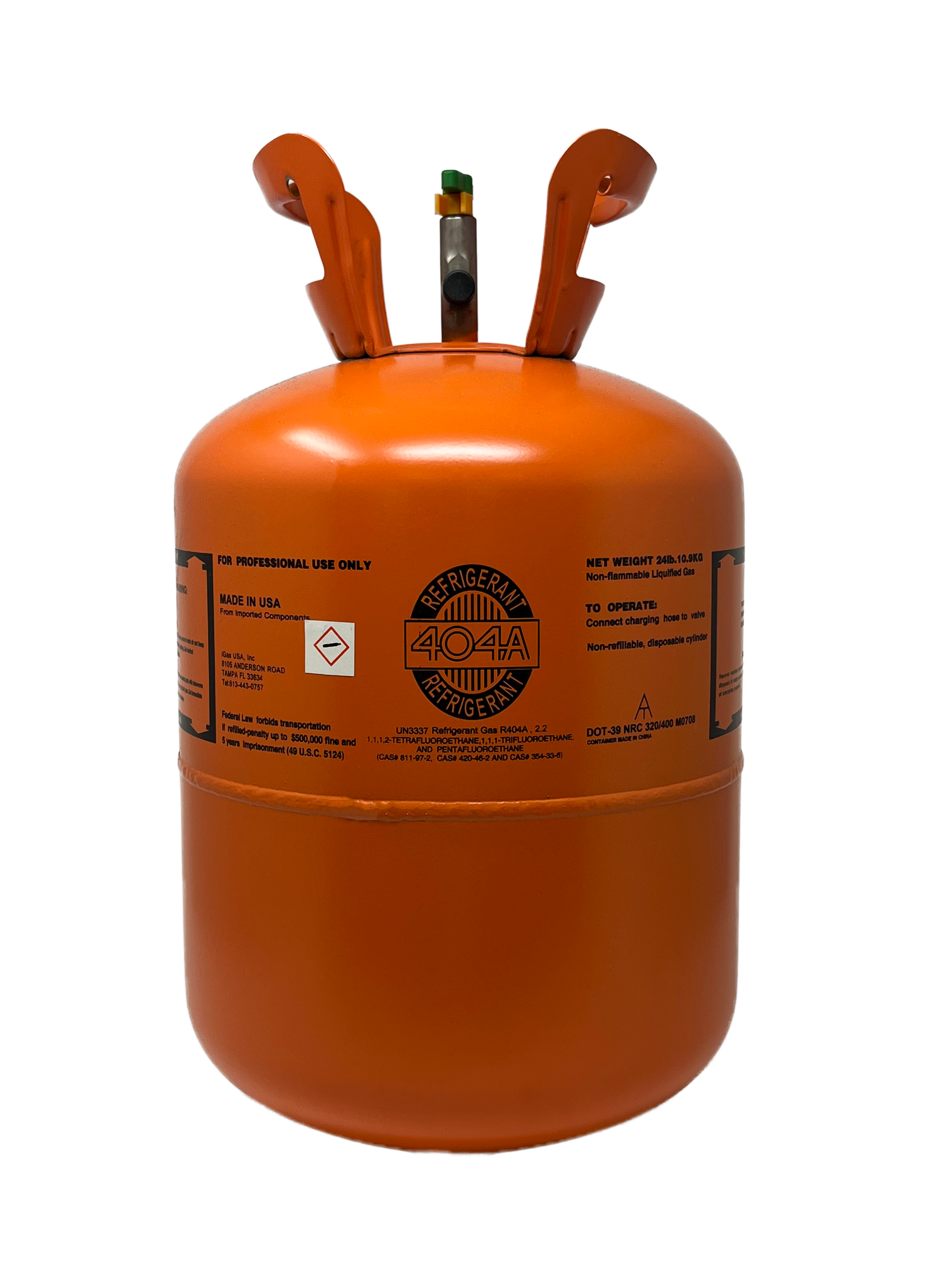R-438A is the first versatile R-22 retrofit refrigerant
for replacing R-22 in direct expansion (DX) air conditioning
and refrigeration systems. R-438A significantly lowers discharge temperatures, which may extend compressor life. It facilitates easy retrofitting in which the technician simply recovers the R-22, replaces critical seals, charges the R-438a refrigerant, and monitors for leaks.
It facilitates easy retrofitting in which the technician simply recovers the R-22, replaces critical seals, charges the R-438a refrigerant, and monitors for leaks.
A refrigerant is a substance or mixture, usually a fluid, used in a heat pump and refrigeration cycle. In most cycles it undergoes phase transitions from a liquid to a gas and back again. Many working fluids have been used for such purposes.
The color guideline is not a substitute for reading cylinder labels and markings.
Refrigerant is a tasteless, mostly odorless gas. When it is deeply inhaled, it can cut off vital oxygen to your cells and lungs. Limited exposure — for example, a spill on your skin or breathing near an open container — is only mildly harmful. However, you should try to avoid all contact with these types of chemicals.
To remove chlorine from the refrigerant, manufacturers created another set of refrigerants called HFCs (or Hydro Fluro Carbons). Although they also have the potential for global warming, but still they are better than HCFCs as they do not deplete the ozone layer. The most common HFC used in air conditioners is R-410A.
R-134a Refrigerant.
Widely used in many air conditioning and refrigeration systems globally.
It is a hydro-fluorocarbon (HFC) that does not contribute to ozone depletion; also the first non-ozone-depleting fluorocarbon refrigerant to be commercialized.
To remove chlorine from the refrigerant, manufacturers created another set of refrigerants called HFCs (or Hydro Fluro Carbons). Although they also have the potential for global warming, but still, they are better than HCFCs as they do not deplete the ozone layer. The most common HFC used in air conditioners is R-410A.



